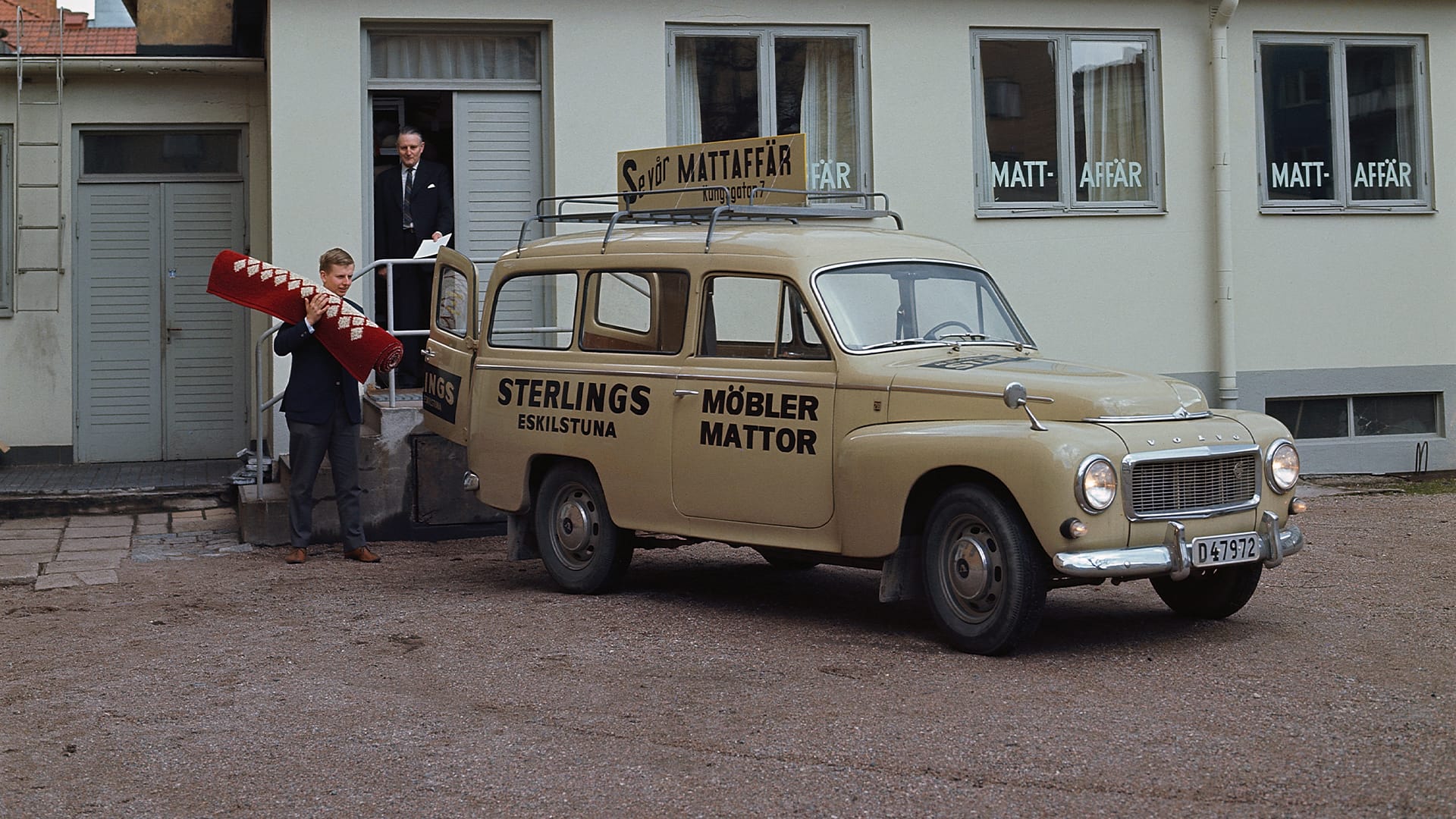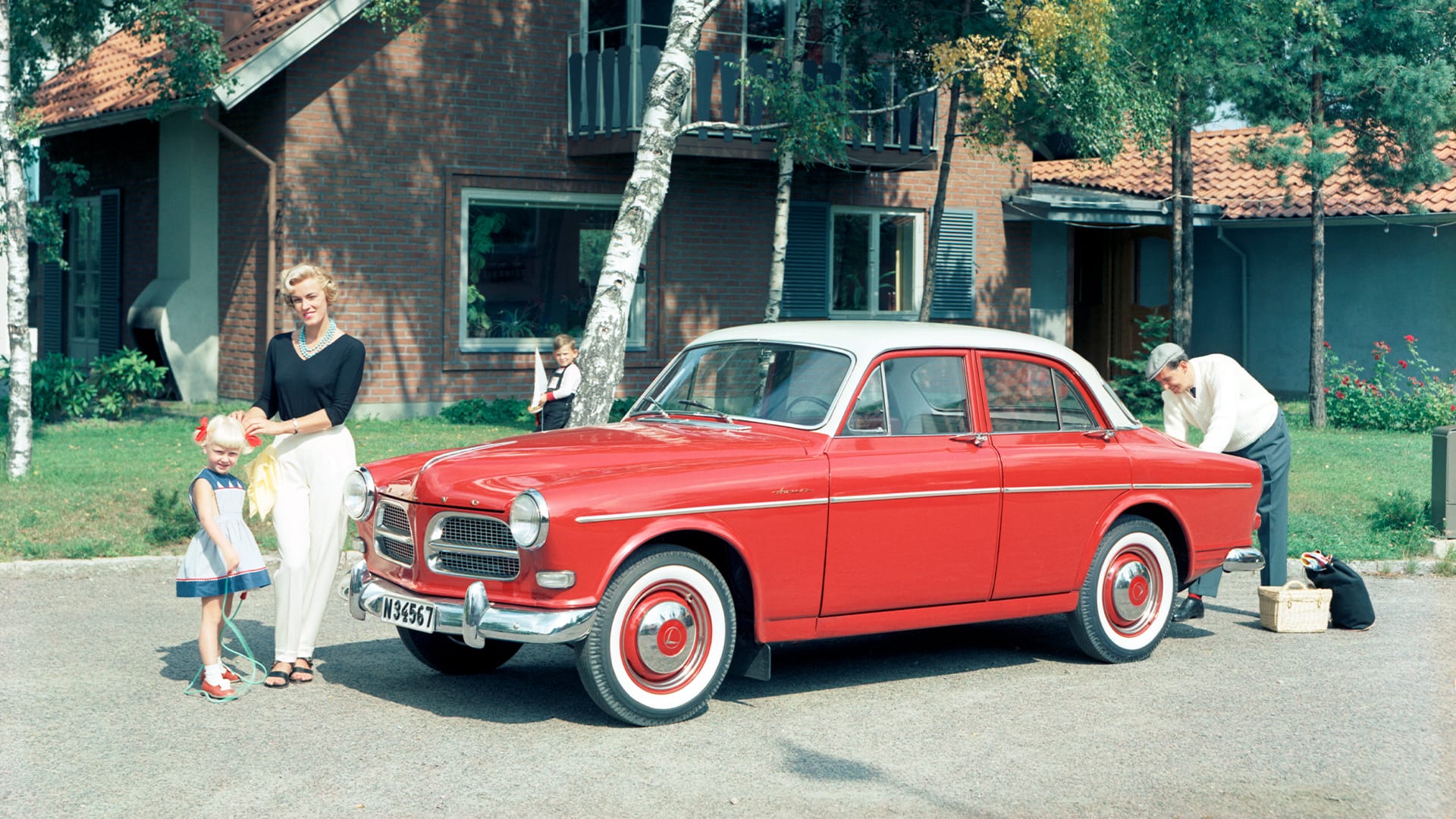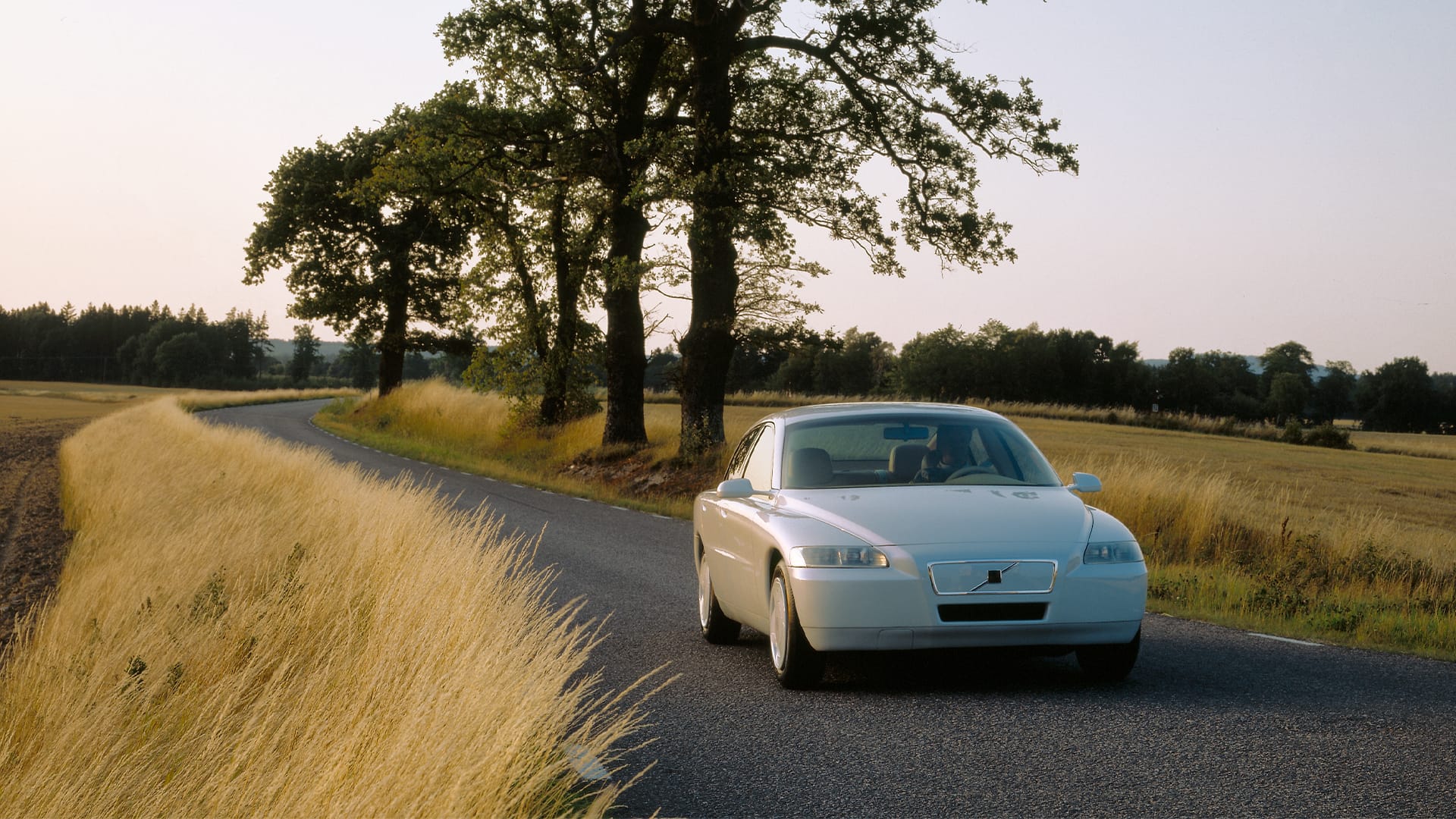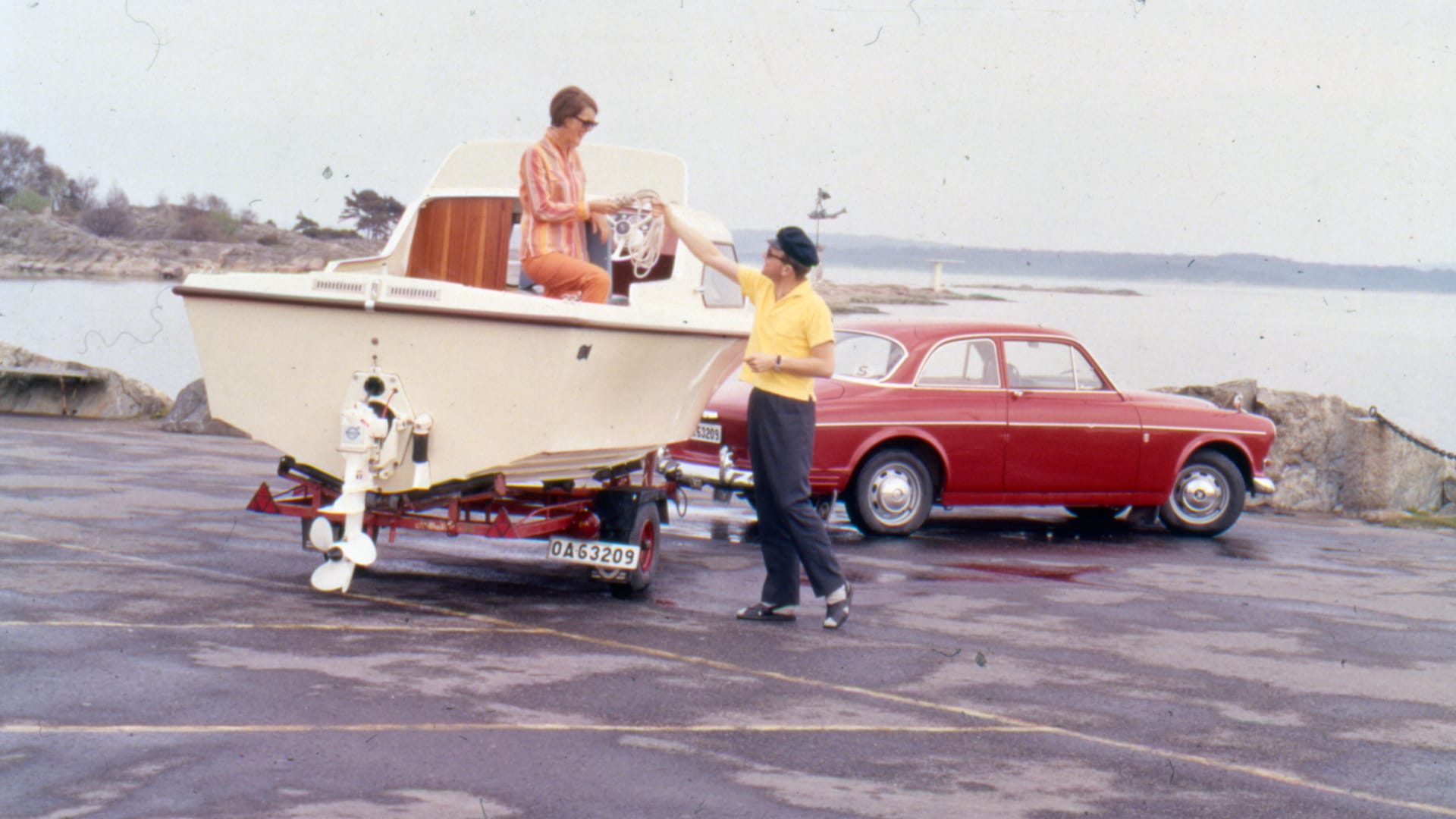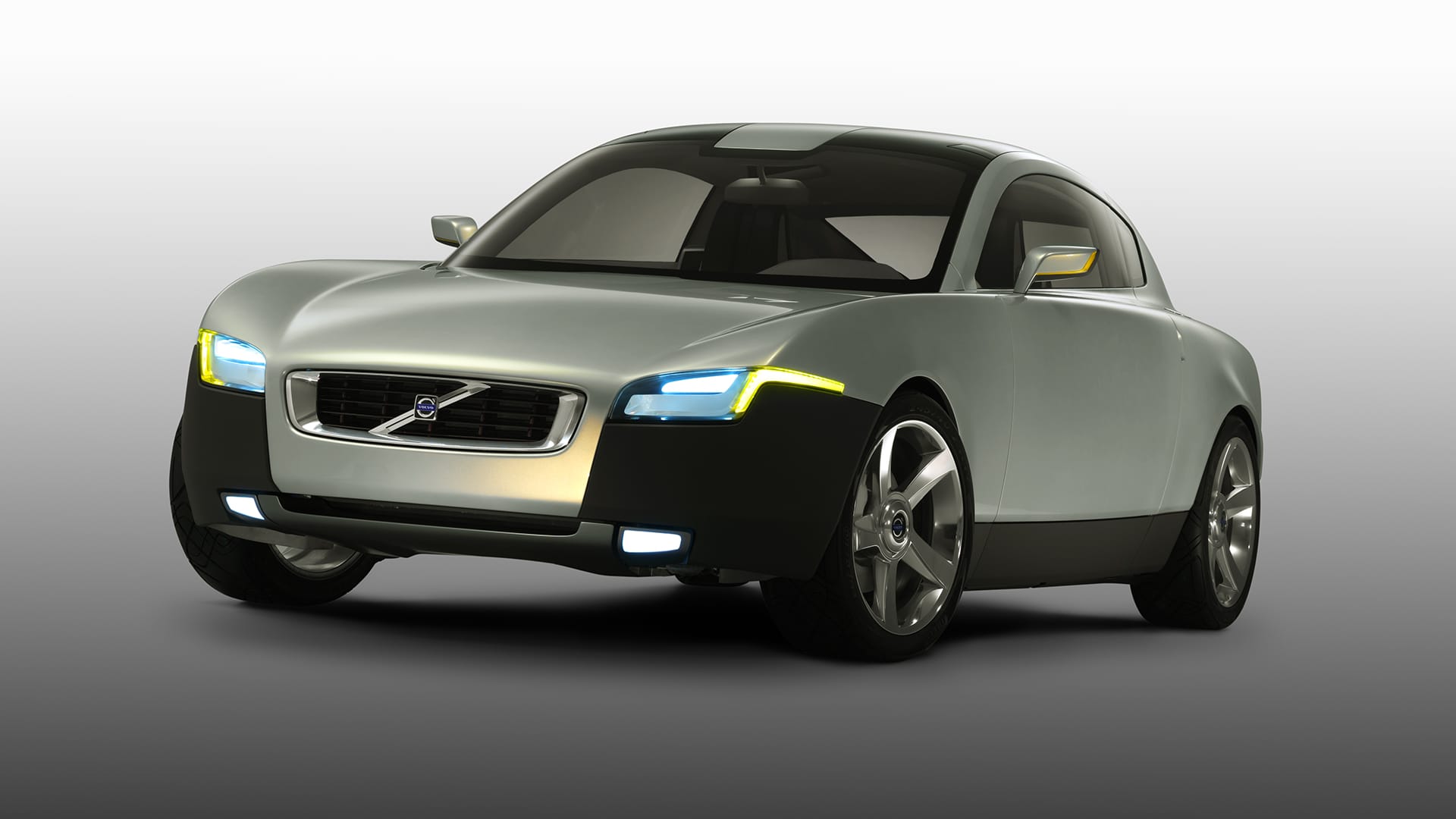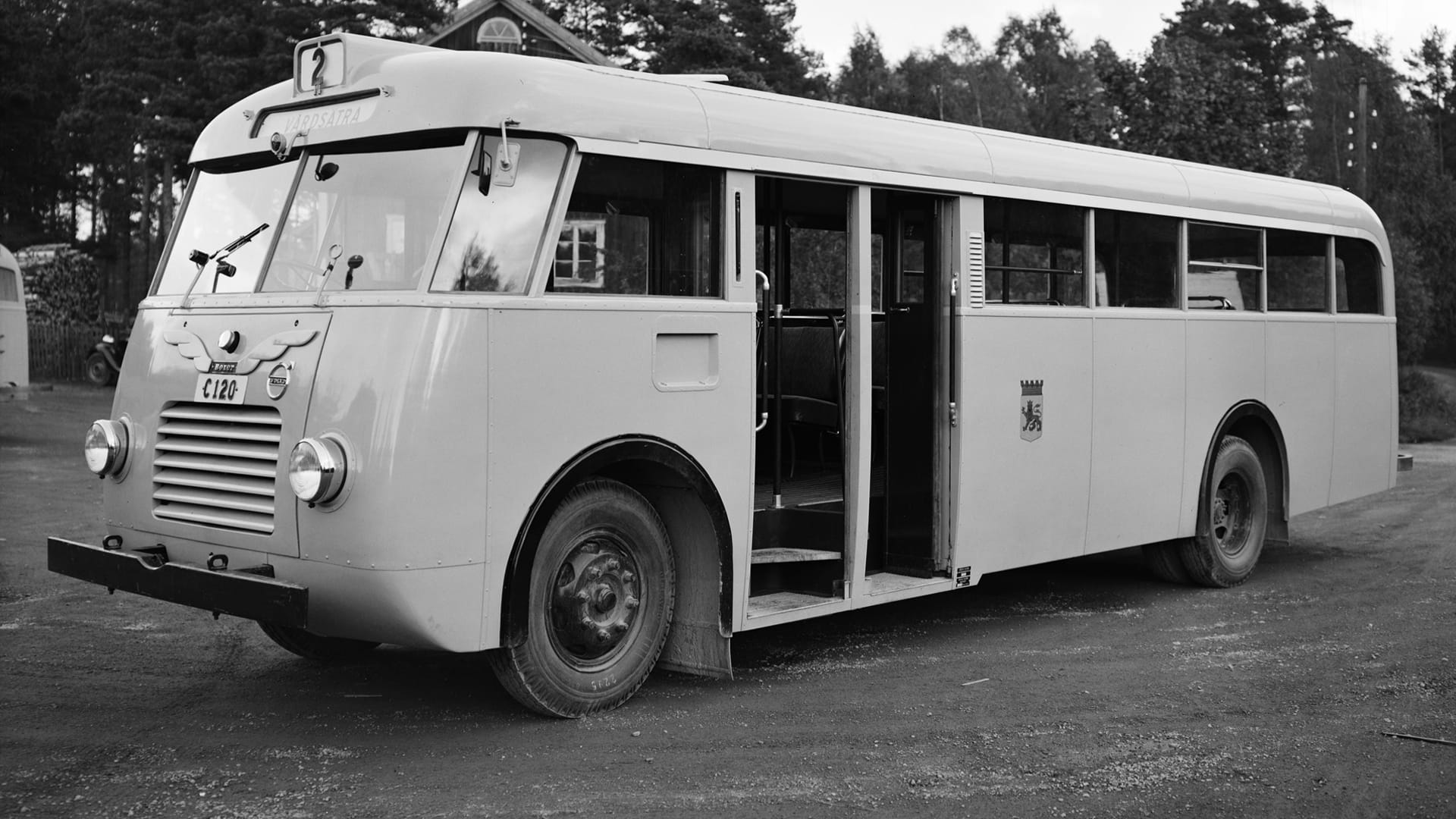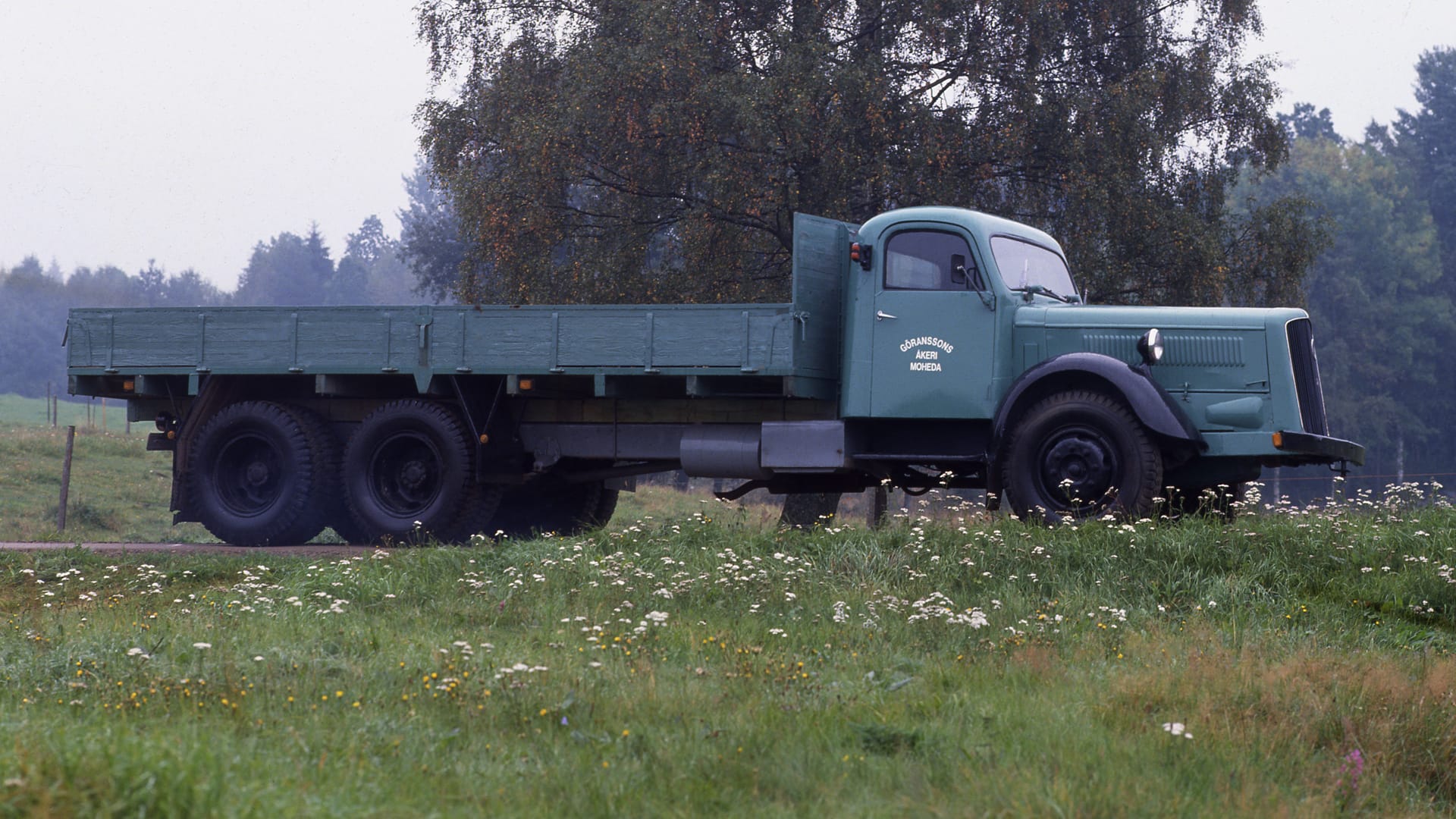Volvo PV445 Duett

Twice as good
The Duett inspires Volvo’s tradition as a manufacturer of estates. The very first brochure captures the essence of a model that would become intimately associated with the Volvo brand: “It is a car that has double use – an agile and fast delivery van during working hours, a spacious and comfortable passenger car during leisure time."
Initially, Volvo only produces a frame chassis, PV445, which is used for various bodywork by independent bodybuilding companies in Sweden. But eventually, Assar Gabrielsson decides to build "our own delivery van" – and the Duett is born.
Chassis with differences
The mechanics from the PV444 are placed on a fully welded box section with sturdy cross-bracing. The rear axle gets a lower gear ratio and is sprung with two rigid semi-elliptic leaf springs, unlike the coil spring suspension in the PV444, which provides better comfort. The first chassis was presented on September 9, 1949, and is designated as the PV445. It weighs 725 kilograms and can carry a load of 500-550 kilograms. The wheelbase and track width are the same as in the PV444. It also has four horizontal ribs on the front, whereas the PV445 has five – to disguise its height.
Government agencies' favourite
The front end, hood, front fenders, firewall, threshold boxes, and instrumentation are taken from the PV444. The rest is up to the bodybuilders. The largest bodybuilders at this time are Grantorpets Industrier in Västervik, Valbo Karosserifabrik in Gävle, and KABO in Umeå. The buyers are often state agencies such as SJ, Väg- och vattenverket, and Telegrafverket. A large number of chassis are exported to Europe, as well as to Brazil, Uruguay, and Peru.
Build our own delivery van
But sales are slow, the 445 cars are not replaced at all at the rate Volvo expects, and by 1952, 1,500 unsold chassis are waiting for buyers. Volvo founder Assar Gabrielsson then gives the order which might possibly be seen as a stroke of genius: "Let’s build our own delivery van!". Thus, Volvo Duett is born, Volvo's first own estate wagon.
Two cars in one
Volvo engineer Erik Skoog and his team become responsible for the project, which starts in May 1952. They start from the 445-chassis, design a full steel body, and order the necessary tools from the press works in Olofström in Blekinge in July 1953. The first finished Duett is delivered to the man who gave birth to the idea, Assar Gabrielsson. The name Duett comes from the idea that the model should be seen as two cars in one, both a family car and a work vehicle.
Three models
In addition to Olofström, bodywork is also made in nearby Karlshamn and Mörrum, while final assembly takes place at Lundbyverken in Gothenburg. There are three different Duett models to choose from: a pure delivery van without side windows, a delivery van with a single rear seat and a side window, and the luxury version, with a folding rear seat and windows along the sides. However, the Duett is always two-door – or four-door, if you count the two tailgates.
Loads and performs well
The Duett quickly becomes known for its enormous load capacity and elegant design – and demand is high. The weak top valve engine B4B with 40 hp also does not deter. It is low-geared and strong, and is therefore better suited for distribution runs in the city than on the highway.
New model
The Duett is called PV445 from its release in 1953 until major changes happen in 1960, when it not only changes its name to P210 but also gets a full windshield, four-speed gearbox, new dashboard, and safety belts as standard. In the spring of 1962, the Duett is equipped with the widely used B18A engine.
16 years in production
Many expect the Duett to disappear when the Amazon wagon is launched in 1962 or when Volvo 145 arrives in 1967 – but the Duett model is as durable as the car itself. It is not until February 11, 1969, that production ends. The last car to leave the line has chassis number 97 299 and is part of the Volvo Cars Heritage Collection. Including the delivery chassis, 101,492 Duetts are manufactured, making it the last frame-built car from Volvo.

